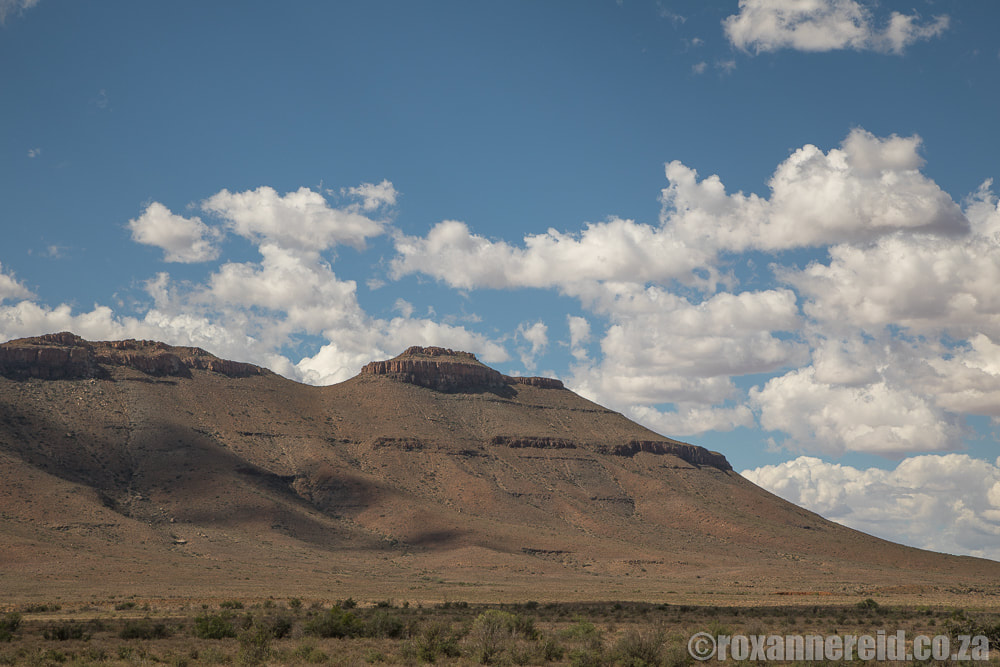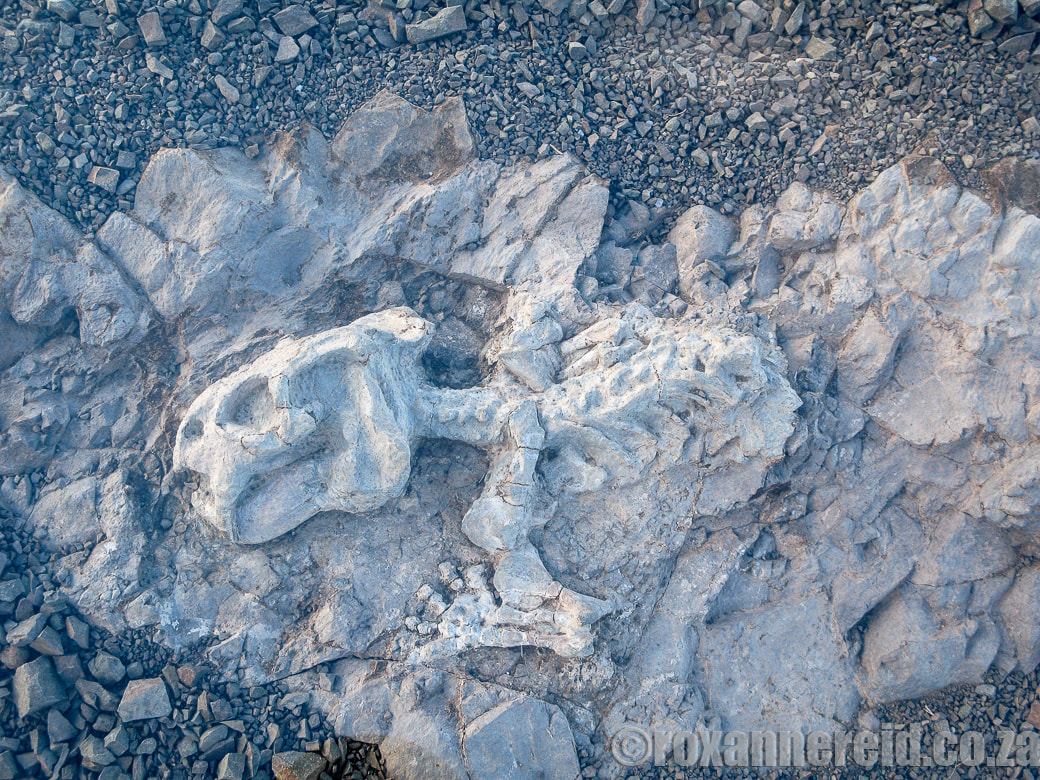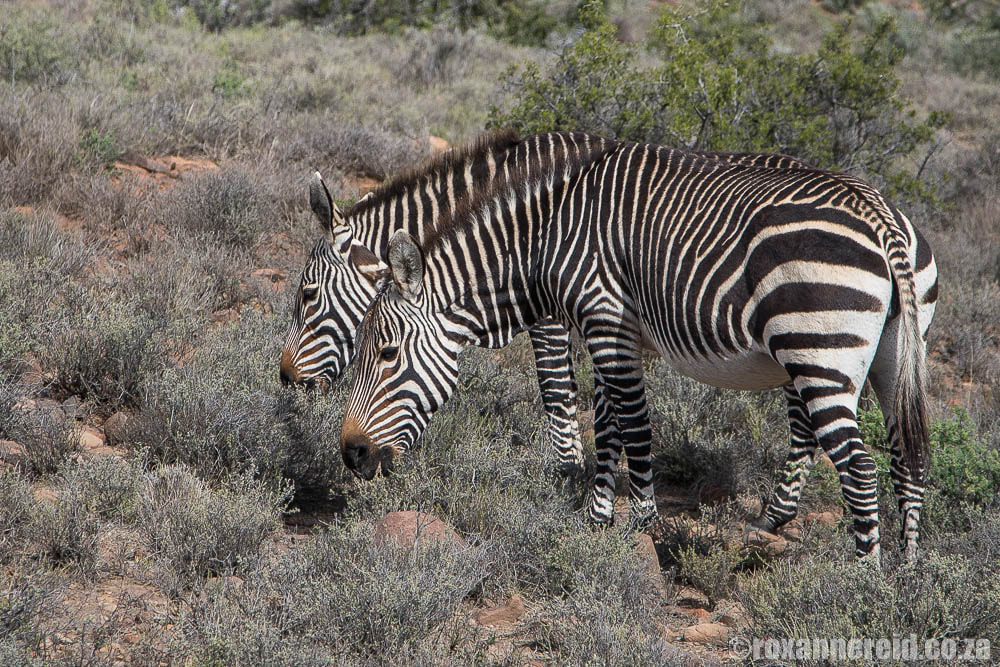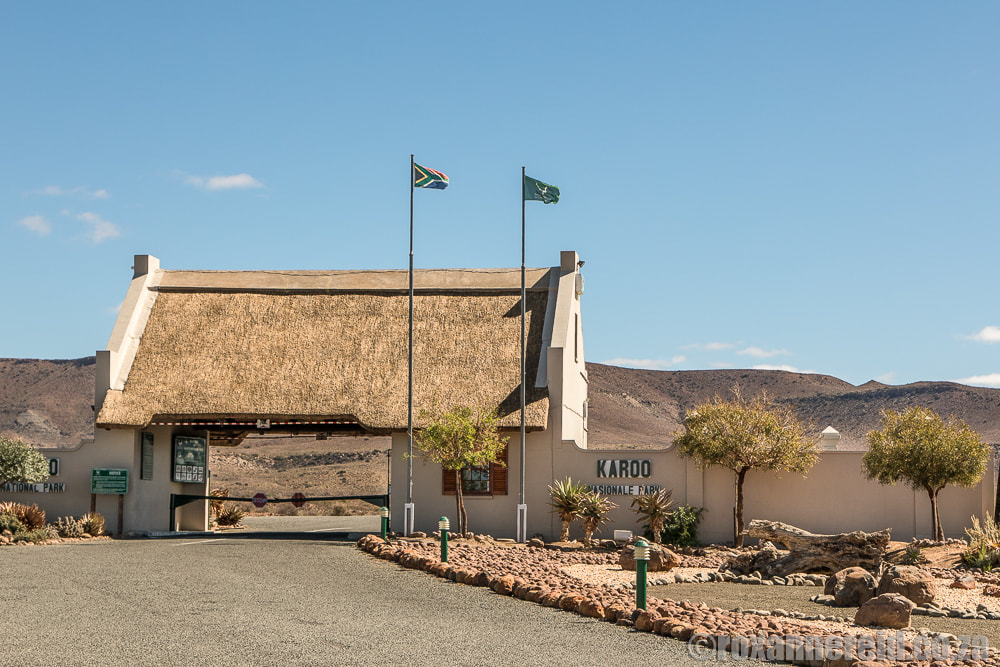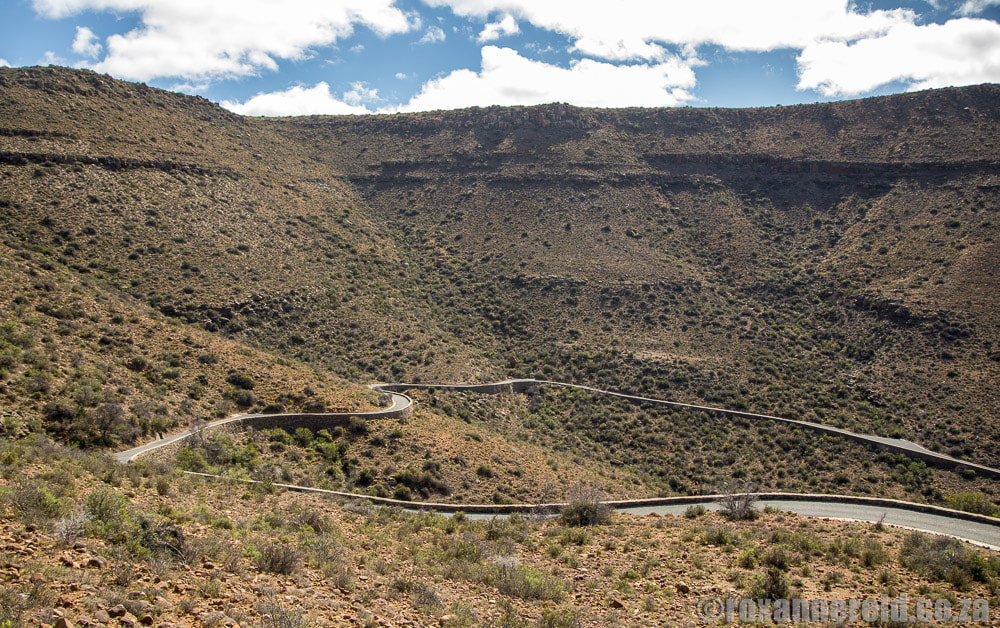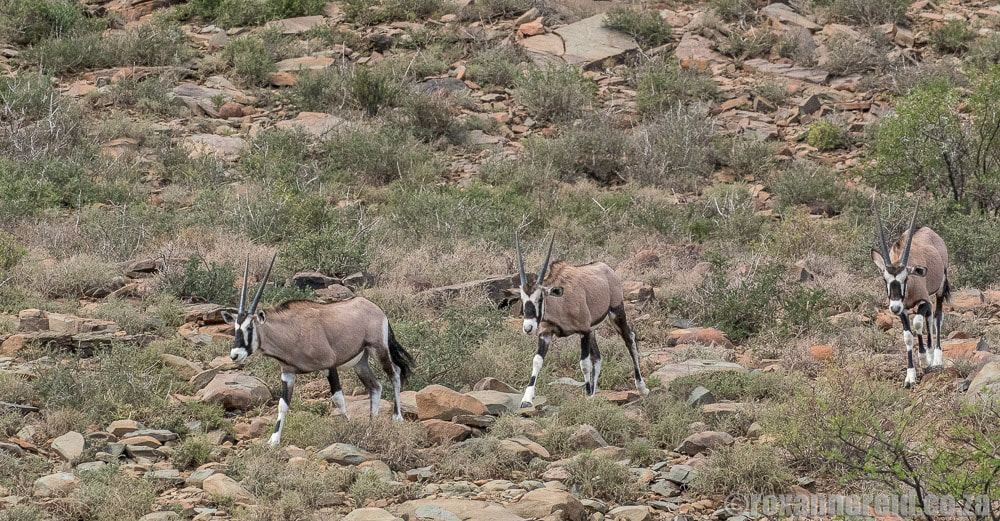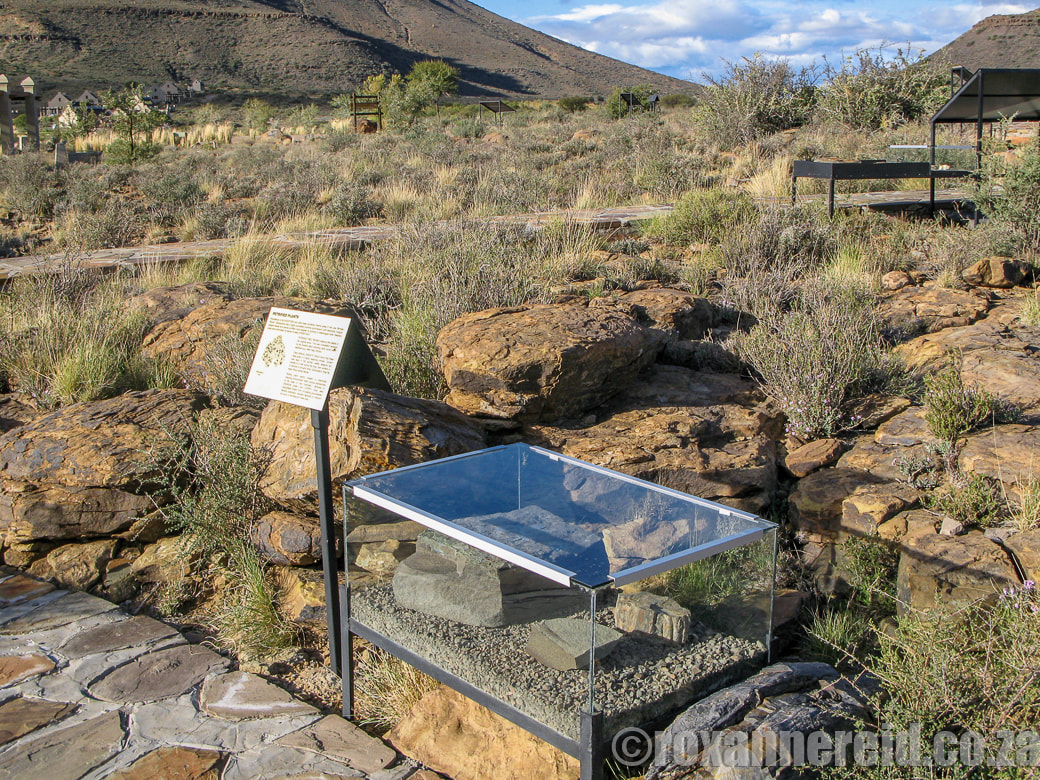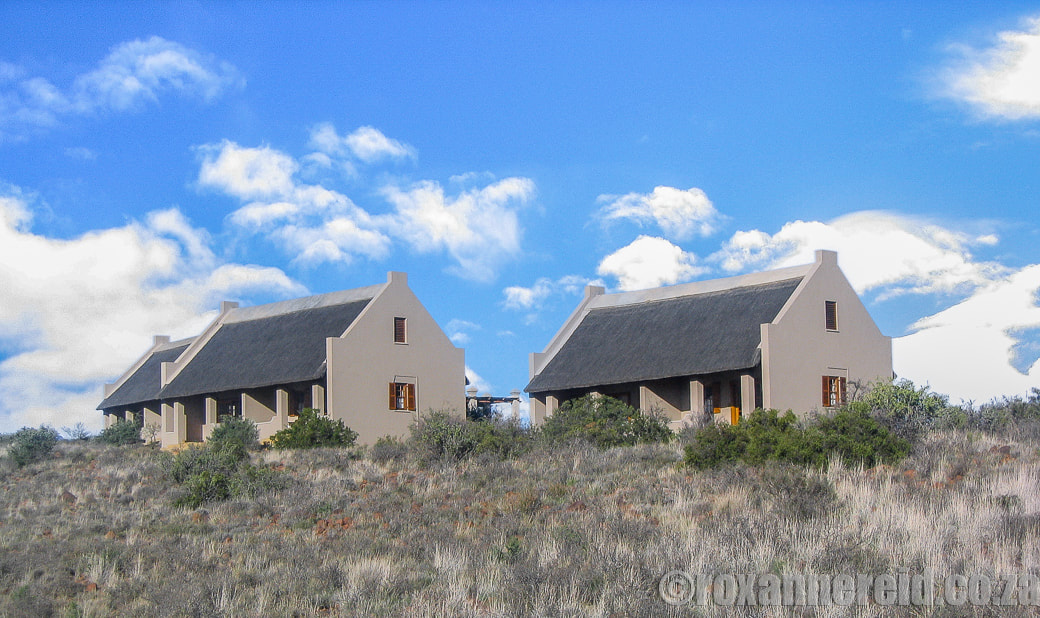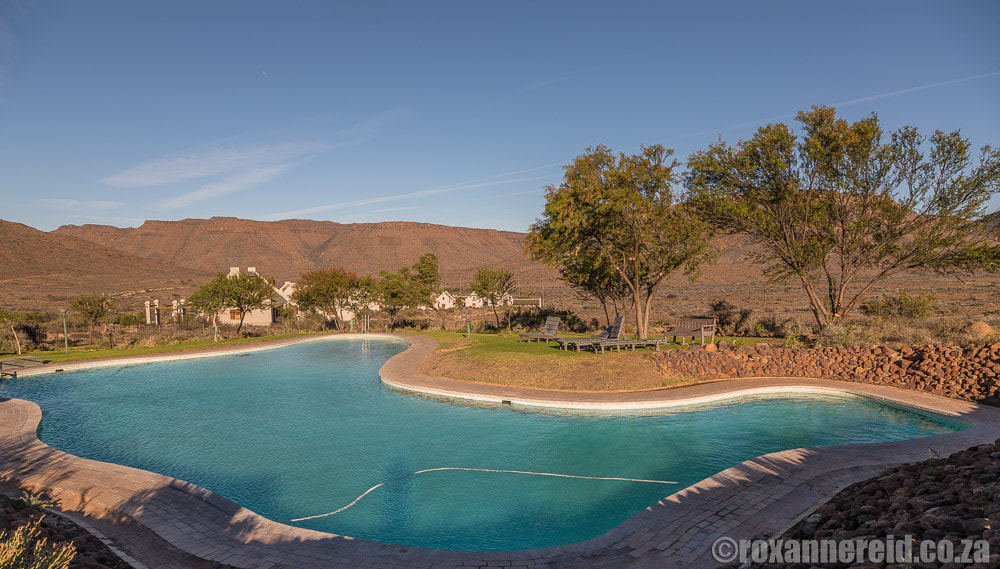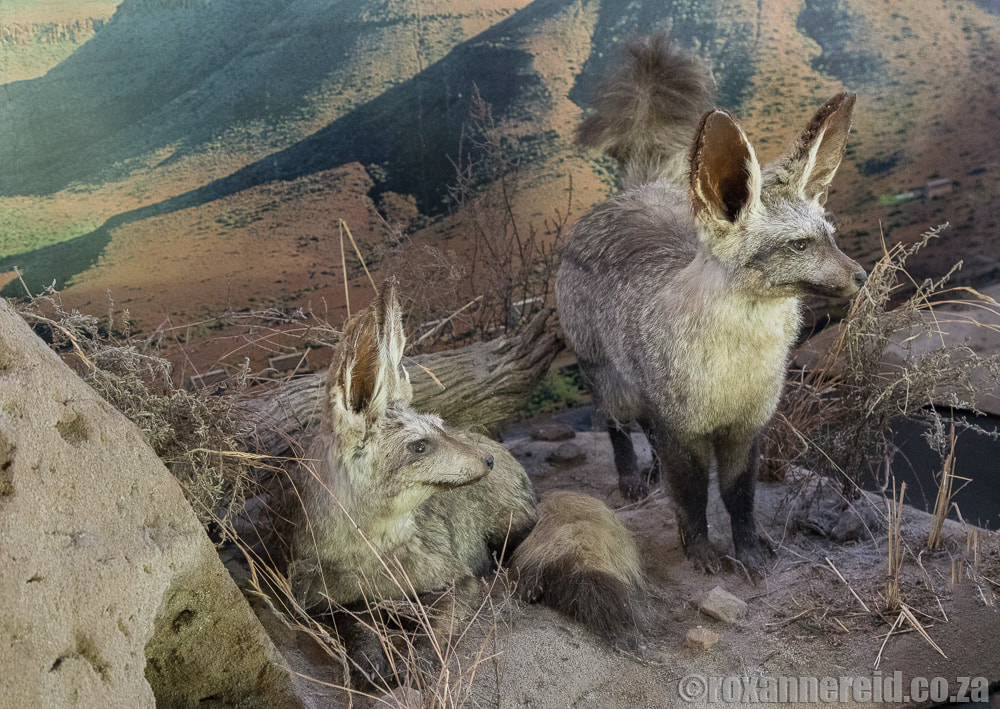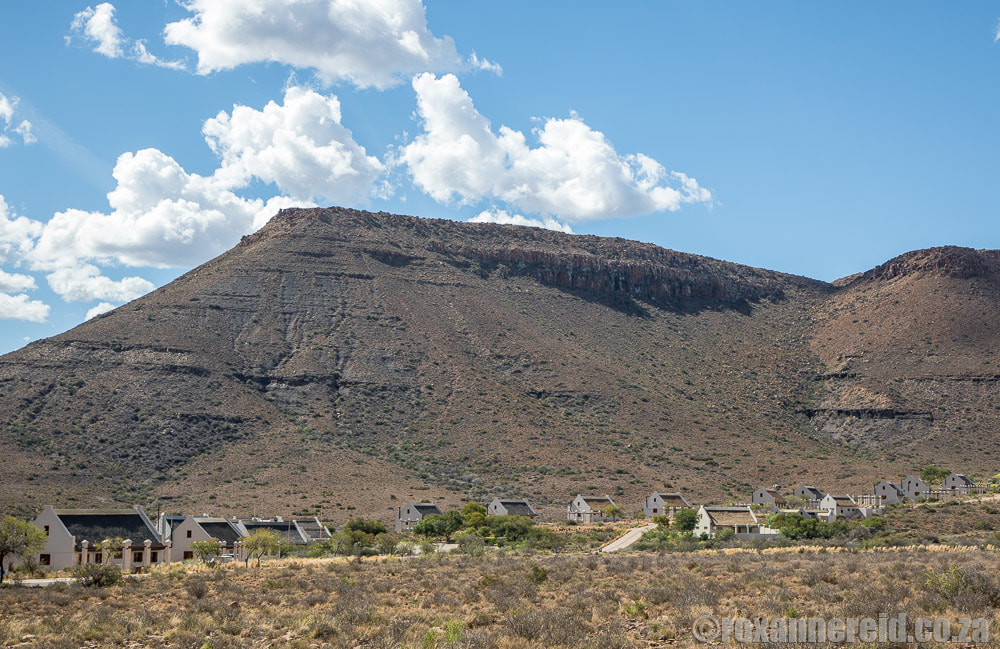
By Roxanne Reid
Stark, denuded and barren are words that might be top of mind for any first-time visitor to the Karoo National Park just outside Beaufort West in South Africa. But that would be to ignore everything that makes this area special. Find out more in Karoo National Park: the ultimate guide.
Stark, denuded and barren are words that might be top of mind for any first-time visitor to the Karoo National Park just outside Beaufort West in South Africa. But that would be to ignore everything that makes this area special. Find out more in Karoo National Park: the ultimate guide.
Think vast panoramas and silent grandeur, spectacular night skies, and the softening of all this austerity into gentle shades of pink, greyish-blue and lilac at dusk. Take a slow, inquisitive walk, spend an hour or two at the water’s edge bird hide, or indulge in some quiet contemplation in an ancient landscape.
The Karoo’s history goes back five billion years and you can see the fossilised ‘stone bones’ of creatures who wandered these plains millions of years ago.
Today, there’s still an assortment of endemic wildlife living in the park, from lion to Cape mountain zebra, red hartebeest, gemsbok, klipspringer and caracal. Verreaux’s eagles breed in the rugged cliffs of the Nuweveld mountains and you can spot them gliding across the impossibly blue sky. This Karoo park is also home to many well-adapted reptiles and succulent plants.
All this makes the Karoo National Park a special place, providing the ‘why’ for your visit. Read on to find out more about what, where, when and how.
Getting there
The Karoo National Park entrance gate is just off the N1 highway, about 6km south of Beaufort West in the Karoo. The park makes a convenient stopover on a road trip because it is about 500km from Cape Town and 1000km from Johannesburg.
Getting there
The Karoo National Park entrance gate is just off the N1 highway, about 6km south of Beaufort West in the Karoo. The park makes a convenient stopover on a road trip because it is about 500km from Cape Town and 1000km from Johannesburg.
Getting around
There’s a network of tarred roads from the entrance gate to the main rest camp, as well on the Lammertjiesleegte game viewing loop, Klipspringer Pass up the mountain and the Potlekkertjie game-viewing loop. There’s also a network of rugged gravel trails suitable only for 4x4s, some of them one-way only. If you’re not driving a 4x4, do NOT enter these 4x4 routes even if they look easy; they can get rugged further along and you won’t be able to turn around.
There’s a network of tarred roads from the entrance gate to the main rest camp, as well on the Lammertjiesleegte game viewing loop, Klipspringer Pass up the mountain and the Potlekkertjie game-viewing loop. There’s also a network of rugged gravel trails suitable only for 4x4s, some of them one-way only. If you’re not driving a 4x4, do NOT enter these 4x4 routes even if they look easy; they can get rugged further along and you won’t be able to turn around.
Best time to visit
The Karoo National Park is a place of extremes and only you can say whether you prefer the heat or cold, or something in between. Summer months (October to March) are hot and can reach up to 40 degrees Celsius, sometimes relieved by thunder showers. Rainfall is an average of some 200mm a year. Winters, especially June and July, are very cold, with temperatures below zero and snow sprinkling the high peaks of the surrounding mountains. Cold winds can also blow in winter – Beaufort West nearby holds the South African wind speed record of 186km/h.
What to look for
Some 60 species of mammals make their home in the park, including lions (reintroduced in 2010), black-backed jackal, klipspringer, steenbok, red hartebeest, gemsbok, kudu, eland and Cape mountain zebra. If you go on a guided night drive, there’s a chance you may see nocturnal species like aardvark, aardwolf or caracal.
The Karoo National Park is a place of extremes and only you can say whether you prefer the heat or cold, or something in between. Summer months (October to March) are hot and can reach up to 40 degrees Celsius, sometimes relieved by thunder showers. Rainfall is an average of some 200mm a year. Winters, especially June and July, are very cold, with temperatures below zero and snow sprinkling the high peaks of the surrounding mountains. Cold winds can also blow in winter – Beaufort West nearby holds the South African wind speed record of 186km/h.
What to look for
Some 60 species of mammals make their home in the park, including lions (reintroduced in 2010), black-backed jackal, klipspringer, steenbok, red hartebeest, gemsbok, kudu, eland and Cape mountain zebra. If you go on a guided night drive, there’s a chance you may see nocturnal species like aardvark, aardwolf or caracal.
Look out, too, for some of the 200 bird species. At the bird hide at a small dam near the main camp you can sometimes spot water birds like dabchicks and red-knobbed coots. Other species in the park include Verreaux’s (black) eagle, martial eagle, Karoo korhaan, kori bustard, cinnamon-breasted warbler, longbilled lark and short-toed rock thrush.
There are some 60 reptile and eight amphibian species in the park. Look out for the five species of tortoise, including the large leopard tortoise and the tiny Karoo dwarf tortoise.
Walk the 800m Bossie Trail to explore the Karoo’s diversity of Karoo succulents and other plants, such as crassulas, klapperbossie, boegoekaroo and the intriguingly named num-num.
Explore the 400m Fossil Trail to see a collection of geological and palaentological finds from the area, including fossil fragments and skeletons turned to stone. Info boards show what the Karoo Basin looked like when it was still a swamp and introduce you to some of the creatures who lived here a whopping 250 million years ago.
There are some 60 reptile and eight amphibian species in the park. Look out for the five species of tortoise, including the large leopard tortoise and the tiny Karoo dwarf tortoise.
Walk the 800m Bossie Trail to explore the Karoo’s diversity of Karoo succulents and other plants, such as crassulas, klapperbossie, boegoekaroo and the intriguingly named num-num.
Explore the 400m Fossil Trail to see a collection of geological and palaentological finds from the area, including fossil fragments and skeletons turned to stone. Info boards show what the Karoo Basin looked like when it was still a swamp and introduce you to some of the creatures who lived here a whopping 250 million years ago.
Don’t forget that the landscapes and mountains are part of the appeal of this distinctive Karoo park. Watch the mountains change colour at sunset and see the stars come out to play in clear skies. Take a drive up the Klipspringer Pass to the Rooivalle lookout to appreciate the rock formations and deep valley.
For more detail about what to do in this special place, see my blog post 17 things to do in the Karoo National Park.
Where to stay
When it comes to your Karoo National Park accommodation, you have four choices, which I’ve outlined below. In fact, the main rest camp’s chalets make a peaceful alternative to Beaufort West accommodation too, even if you’re not staying longer in the park.
Main rest camp
The main rest camp has two- to six-bed chalets in Cape Dutch style, with mountain views, electric stove, microwave, fridge, kitchen utensils, aircon, loo, bath/shower and braai; family units have satellite TV. The camp’s restaurant serves meals, including breakfast, which is included in the rate.
Where to stay
When it comes to your Karoo National Park accommodation, you have four choices, which I’ve outlined below. In fact, the main rest camp’s chalets make a peaceful alternative to Beaufort West accommodation too, even if you’re not staying longer in the park.
Main rest camp
The main rest camp has two- to six-bed chalets in Cape Dutch style, with mountain views, electric stove, microwave, fridge, kitchen utensils, aircon, loo, bath/shower and braai; family units have satellite TV. The camp’s restaurant serves meals, including breakfast, which is included in the rate.
Afsaal and Embizweni cottages
Afsaal is an old shepherd’s hut on the southern section of the Nuweveld 4x4 route, about 25km from the main camp. Now fixed up, and a very special example of old-style Karoo accommodation, it sleeps two adults and two kids. It has a small waterhole, which is lit up at night for 24-hour game viewing from the comfort of your stoep. There’s a braai unit, solar lighting, and gas for the fridge/freezer, cooking and hot-water showers. No cellphone reception.
Afsaal is an old shepherd’s hut on the southern section of the Nuweveld 4x4 route, about 25km from the main camp. Now fixed up, and a very special example of old-style Karoo accommodation, it sleeps two adults and two kids. It has a small waterhole, which is lit up at night for 24-hour game viewing from the comfort of your stoep. There’s a braai unit, solar lighting, and gas for the fridge/freezer, cooking and hot-water showers. No cellphone reception.
Embizweni is further north on the De Hoek Loop off the Nuweveld 4x4 trail, about 50km from the main rest camp. It accommodates six. It also has a small waterhole, solar lighting, with gas for the fridge/freezer, cooking and hot-water showers. No cellphone reception. You need to book a minimum of two nights here, and must book through the park’s reception, tel 023 415-2828 (not SANParks central reservations).
Camping
The Karoo National Park has a really nice campsite at the main rest camp, with grassed sites that are big enough for caravans or motor homes. Each site has a power point, and there are clean ablutions, even a laundry with a washing machine and tumble dryer.
Camping
The Karoo National Park has a really nice campsite at the main rest camp, with grassed sites that are big enough for caravans or motor homes. Each site has a power point, and there are clean ablutions, even a laundry with a washing machine and tumble dryer.
Facilities
- A small shop sells basic groceries and curios, and there’s a licensed restaurant and a swimming pool at the main rest camp.
- Near the campsite and reached via a raised boardwalk is an interpretive centre that explores the history, ecology, fauna and flora of the Karoo. It’s well worth a visit to get insight into the area’s history and diversity.
- There are two picnic areas in the park for overnight and day visitors. Doornhoek is on the Potlekkertjie Loop. Bulkraal on the Lammertjiesleegte road has a swimming pool.
- Note that you can’t buy fuel in the park. The closest fuel station is at Beaufort West about 10km away from the main rest camp, so fill up before you arrive.
- There’s cellphone reception at the main rest camp and the campsite, but not at Afsaal or Embizweni cottages.
Need to know
SANParks central reservations
Tel (012) 428-9111
Email: reservations@sanparks.org
www.sanparks.org
Note that you can’t book Embizweni Cottage through SANParks central reservations; book (a minimum two nights) directly through Karoo National Park’s reception, tel 023 415-2828.
Like it? Pin this image!
SANParks central reservations
Tel (012) 428-9111
Email: reservations@sanparks.org
www.sanparks.org
Note that you can’t book Embizweni Cottage through SANParks central reservations; book (a minimum two nights) directly through Karoo National Park’s reception, tel 023 415-2828.
Like it? Pin this image!
You may also enjoy
17 things to do in the Karoo National Park
The enchantment of Mountain Zebra National Park
Copyright © Roxanne Reid - No words or photographs on this site may be used without permission from roxannereid.co.za
17 things to do in the Karoo National Park
The enchantment of Mountain Zebra National Park
Copyright © Roxanne Reid - No words or photographs on this site may be used without permission from roxannereid.co.za
